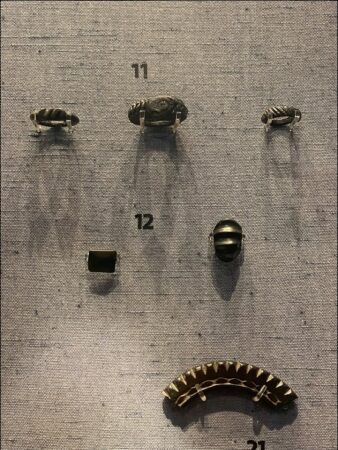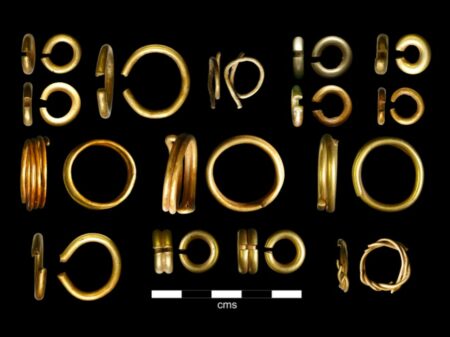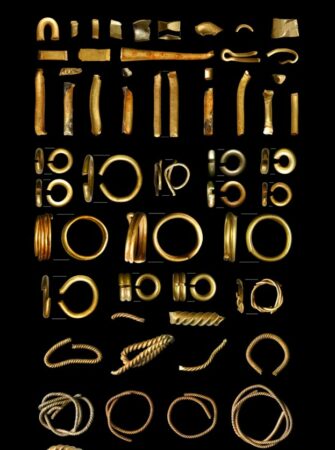Blog post by Imogen Davis
First, I just wanted to take a moment to express my gratitude for the amazing work experience I had at the museum. I truly enjoyed every moment and working with such wonderful people. The experience has been invaluable to me. I’ve gained a deeper understanding of museum operations, developed new skills, and had the chance to contribute to meaningful projects. It has truly solidified my interest in pursuing a career in this field. I want to extend my heartfelt thanks to the entire team for making this work experience unforgettable. I will cherish the memories and the lessons learned for years to come.
Why you should visit
Seeing artefacts and artworks in person helped me grasp the context in which they were created. It allowed me to connect historical events, cultural practices, and artistic movements, enhancing my overall comprehension of classical civilisation and art history. The museum had extensive collections and resources that can serve me valuable source of inspiration for research projects or essays. Visiting a museum as a work experience student was an enriching experience. It allowed me to appreciate the beauty and significance of the history in a tangible way but also for anyone interested in history. This work experience greatly enhanced my learning and provide a memorable experience.
I had the privilege to go around and find some pieces that really caught my eye, and the Anglo-Saxon jewellery did just that. It is known for its intricate designs and craftsmanship. Some characteristics of Anglo-Saxon jewellery include:

The art of the goldsmith, the combination of gold and garnet, suggests a piece of jewellery that was crafted with great care and attention to detail. The use of gold in the pendant indicates its value and significance. Gold has always been associated with wealth and prestige, so this pendant may have held great importance to the person who wore it.
You can see the filigree, which is delicate metalwork formed by twisting and curling thin wires, was commonly used in Anglo-Saxon jewellery. Gemstones and Glass Inlays: Anglo-Saxon jewellery often incorporated gemstones like garnets or glass inlays, adding vibrant colours and enhancing the overall aesthetic. Saxon jewellery often had religious and symbolic significance. Symbols like crosses, interlacing patterns, and zoomorphic designs were prevalent, reflecting the fusion of Christian and pagan beliefs during that era. Garnets were often used in ancient jewellery for their rich red hue, symbolising passion and vitality.

Jet, a fossilised wood, was highly valued in ancient times for its deep black colour and smooth texture. The use of jet beads in jewellery during this era reflects the fashion trends and cultural preferences of the time. The popularity of jet can be attributed to several factors. Firstly, jet was readily available and relatively easy to work with, making it accessible to a wide range of individuals. Additionally, the dark colour of jet contrasted well with other materials, such as gold or silver, allowing for striking combinations in jewellery designs.


Bronze Age rings, visual analysis
The simplicity of the design of this plain gold ring suggests that it may have had a symbolic or personal significance. It could have been worn as a form of adornment or as a status symbol, representing wealth or social standing. The use of gold in the ring indicates the value and prestige associated with this metal. Gold has always been highly prized throughout history, and its use in these rings highlights the importance placed on precious materials during the Bronze Age.
The absence of intricate engravings or embellishments on the ring suggests a focus on the purity and elegance of the gold itself. This simplicity allows the natural beauty of the metal to shine through and makes the ring a timeless piece of jewellery. By examining the craftsmanship of the ring, we can gain insights into the skill and techniques of Bronze Age artisans. The precision and attention to detail required to create such a delicate piece demonstrate the craftsmanship and expertise of these ancient metalworkers.
Exploring History Through Artefacts and Engaging Education
I had the opportunity to work with fascinating artefacts such as coins, old jewellery, Roman artefacts, Anglo Saxon artefacts, and stone reliefs. Through research, I was able to uncover the cultural and historical significance behind some of the artefacts, which added a whole new dimension to my understanding of the past.
Additionally, I had the privilege of working with kids and helping them understand history through arts and crafts. By engaging their creativity, we were able to bring historical concepts to life in a fun and interactive way. It was heart-warming to see their enthusiasm as they created their own historical artefacts and learned about different time periods through hands-on activities.
Overall, this experience has been incredibly fulfilling. It has deepened my appreciation for the importance of preserving and sharing our collective heritage. I feel grateful to have been a part of this journey, both in researching artefacts and in inspiring young minds to explore and understand history.
Blog post by Imogen Davis










